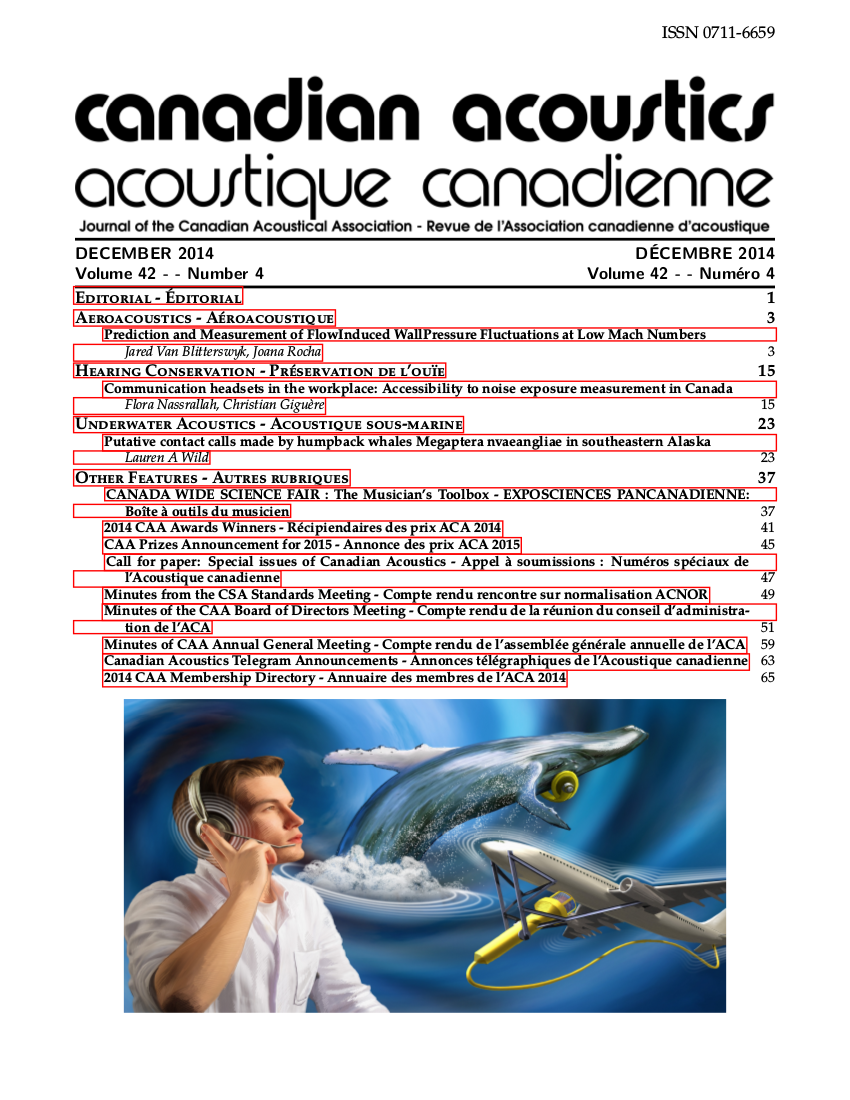Prediction and Measurement of Flow-Induced Wall-Pressure Fluctuations at Low Mach Numbers
Keywords:
turbulent boundary layer, wall-pressure fluctuations, wind tunnel, semi-empirical models, rigid panelAbstract
Flow-induced wall-pressure fluctuations, on a single panel, in a wind tunnel environment are measured and analyzed for Mach numbers between 0.06 and 0.12. The effects of two, flush-mounted microphone cap configurations on measured wall pressure spectra are investigated. A selection of semi-empirical single-point frequency spectrum models, are reviewed and compared to experimental wall-pressure spectra. The measured wall-pressure spectra are compared in dimensional and non-dimensional forms to investigate dependencies on Mach number and turbulent boundary layer scaling variables. The spectra captured with the pinhole microphone configuration are in better agreement with expected behaviour presented in the literature, compared to the grid cap configuration, but show a greater Mach number dependency when scaled with mixed inner and outer boundary layer variables. The models by Laganelli and Efimtsov are most suitable for predicting wall-pressure amplitudes over the low- and mid-frequency regimes whereas, the more recent models by Smol’yakov and Goody are most appropriate for predicting the decay rate in the overlap regime. The absence of a sizeable overlap region, caused by an under-developed logarithmic region in the boundary layer, is believed to be responsible for the disparities between measured and predicted spectra, and the Mach number dependence shown by the normalized spectra.Additional Files
Published
How to Cite
Issue
Section
License
Author Licensing Addendum
This Licensing Addendum ("Addendum") is entered into between the undersigned Author(s) and Canadian Acoustics journal published by the Canadian Acoustical Association (hereinafter referred to as the "Publisher"). The Author(s) and the Publisher agree as follows:
-
Retained Rights: The Author(s) retain(s) the following rights:
- The right to reproduce, distribute, and publicly display the Work on the Author's personal website or the website of the Author's institution.
- The right to use the Work in the Author's teaching activities and presentations.
- The right to include the Work in a compilation for the Author's personal use, not for sale.
-
Grant of License: The Author(s) grant(s) to the Publisher a worldwide exclusive license to publish, reproduce, distribute, and display the Work in Canadian Acoustics and any other formats and media deemed appropriate by the Publisher.
-
Attribution: The Publisher agrees to include proper attribution to the Author(s) in all publications and reproductions of the Work.
-
No Conflict: This Addendum is intended to be in harmony with, and not in conflict with, the terms and conditions of the original agreement entered into between the Author(s) and the Publisher.
-
Copyright Clause: Copyright on articles is held by the Author(s). The corresponding Author has the right to grant on behalf of all Authors and does grant on behalf of all Authors, a worldwide exclusive license to the Publisher and its licensees in perpetuity, in all forms, formats, and media (whether known now or created in the future), including but not limited to the rights to publish, reproduce, distribute, display, store, translate, create adaptations, reprints, include within collections, and create summaries, extracts, and/or abstracts of the Contribution.


